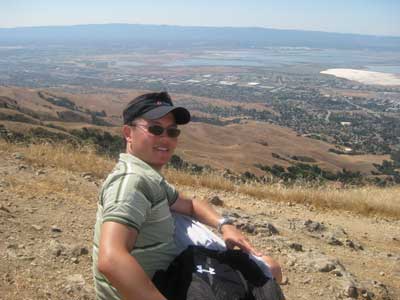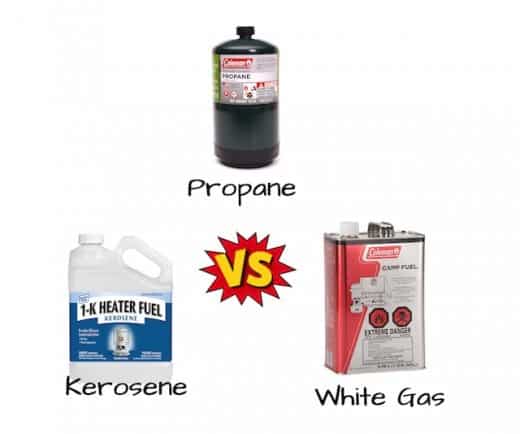
Any avid camper knows how important camping fuels are, but with so many options, how can you be sure what fuel is best?
In this article, we take a look at three common camping fuels (white gas, propane, and kerosene) to explore the pros and cons of each one to help you determine what suits your camping needs best.
Whether you’re an experienced camper seeking some clarity or somebody new to camping wondering where to begin, this guide to camping fuels provides a good foundation for you to make more informed decisions around your camping requirements.
White Gas
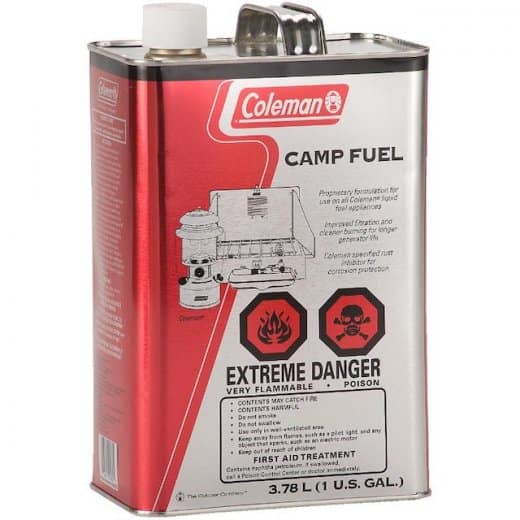
What is white gas?
White gas, scientifically known as ‘naptha’, is a fuel that has no distinct color and is a liquid at room temperature. It was first created in the 1950s as a way of fuelling cars, although its uses have changed significantly since then. A substance distilled from petroleum, it is usually sold in cans and does not contain any additives.
White gas has a large portion of carbon, with every molecule containing between five and nine carbon atoms. This means that the fuel is an excellent way of producing energy, making it popular for running camping stoves. The main producer of white gas is Coleman, a well-known brand that also produces a range of outdoor products such as tents, lanterns, coolers, and sleeping bags.
What is white gas used for?
Today, white gas is predominantly used for camping. With heat and food being critical for the safety of any camper, these needs must be covered. White gas is often the top choice for campers because it addresses both of these requirements, being a fuel that burns bright, hot, and quickly. It is easy to use, meaning that it is often the fuel of choice for camp stoves and lanterns.
In addition to camping, white gas has been a useful fuel for fire dancers who use the substance in performances. It is quick to light when a flame is nearby but can also be extinguished easily.
Pros of using white gas
Pure substance
Unlike other fuels, white gas does not contain impurities. It is considered to be a significantly refined fuel, with the name itself (‘white’) referencing its purity.
Given that the gas does not contain additives, campers do not have to worry about additional toxins or poisons. This not only makes it safer for use, but also for transport and storage.
The purity of white gas also means that fuel lines are less likely to get clogged, a benefit over other fuels that tend to get gummy. This contributes to the safety of the gas, as stoves powered by white gas will be less likely to burn or flare up.
White gas will also not affect the taste of your food and leaves no residue on your camp stove.
Bright burn
The burn of white gas is extremely bright, making it a good choice for camping when light is necessary to see in the dark. The bright burn means that white gas is extremely popular for use in lanterns.
Emits significant energy
White gas burns brightly, but also warmly. It generates a significant amount of heat, providing necessary warmth for cold nights at the campsite.
This article is owned by Recapture Nature and was first published on November 15, 2019
Another benefit is that it takes less white gas to heat water in comparison to other fuels, given its ability to emit warmth. White gas releases a high amount of energy and warmth, which contributes to the heating of other substances such as water while consuming less of the white gas itself.
Quick to ignite
White gas is easy to light. It makes camping a lot easier as you won’t waste time with a difficult-to-light fuel that results in more time to cook dinner or heat water.
Cons of using white gas
Needs pumping
White gas appliances, such as camping stoves, can be more complex to use. White gas stoves usually need to be pumped before they can be used, rather than jumping straight in as you can with simpler appliances.
Pumping is used to create a pressured environment so that the fuel can rise and power the burner.
Highly flammable substance
A benefit of white gas is that it is easy to light, but this can also be dangerous if not used and stored correctly. Even the smallest leak can result in an explosion, so it is strongly advised that white gas is stored far away from any flames.
Propane
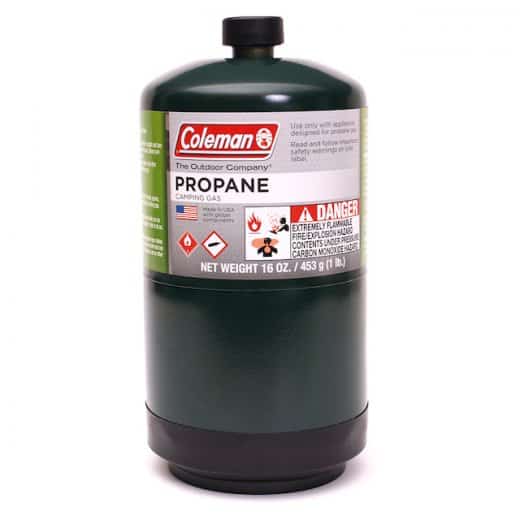
What is propane?
Propane, more commonly known as LPG or liquified petroleum gas, is a colorless substance often used for powering vehicles and appliances.
The nontoxic gas is typically stored in liquid form and is naturally odorless, although a scent is added to enable people to identify its presence. The gas is usually created by processing natural gas. However, some types are also developed through the refinement of crude oil.
What is propane used for?
Propane is used for a range of purposes. It is commonly used to fuel the engines of buses, cars, and forklifts, as well as to heat water and power cooking appliances. This range of uses is likely to expand in the coming years, given developments in technology.
Pros of using propane
Clean
Many campers choose propane because it is considered a clean fuel. In 1990, it was included in the Clean Air Act and has since been used as a substitute for less environmentally friendly products. Propane releases fewer greenhouse emissions than other fuels.
Easy to access
There is plenty of propane available to meet the demand for the substance. The U.S. is the leading developer of propane gas, and the fuel is a popular choice with campers given that it is easy to purchase.
Inexpensive
As far as fuel prices go, propane is relatively affordable. Given the abundance of the fuel, there is no pressure on the price from a demand point of view, allowing it to remain fairly low in cost.
Cons of using propane
Sensitive to temperature
If you are camping in cold environments, propane may not be the best fuel for you. The gas is affected by temperature and is much more difficult to light in freezing temperatures, meaning a propane stove may be difficult to use in these conditions.
Highly flammable
Like white gas, propane is extremely flammable. It requires proper storage and propane lines should be regularly checked to ensure no leaks, which may lead to explosions
Kerosene
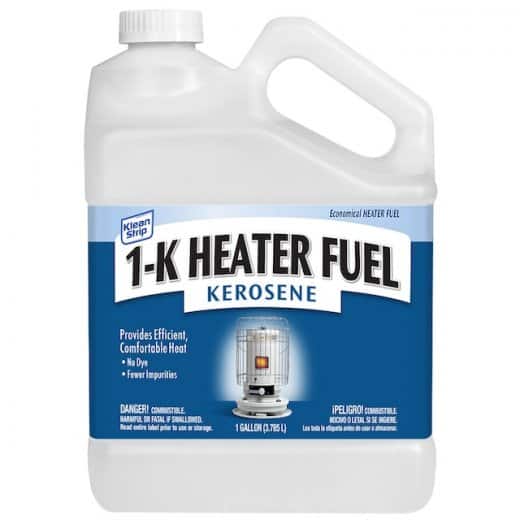
What is kerosene?
Kerosene is a versatile fuel that is often used for heating. Commonly known as paraffin oil, kerosene is clear and non-corrosive. There are two grades of kerosene, with class one being a lighter substance that is used for lighting in lanterns and class two, a heavier fuel, being used for heating.
What is kerosene used for?
Kerosene is typically used for lighting and heating purposes. In homes that are not connected to main networks, kerosene may be used to heat old appliances. It is also commonly used in lamps and lanterns, especially for camping.
This article is owned by Recapture Nature and was first published on November 15, 2019
Pros of using kerosene
Safe
Kerosene is considered a safe fuel as it is clean and has low risk in regard to carbon monoxide poisoning. As it’s non-corrosive, it is less dangerous than other fuels and can be stored safely for a long period of time.
More environmentally friendly
Kerosene, being a clean fuel, does not produce fumes and therefore is more environmentally friendly than alternative substances.
Emits a significant amount of heat
Kerosene is a popular choice for camping because it emits a significant amount of heat. It is estimated that kerosene has a heat efficiency of 91%, making it an excellent choice for alpine campers or those sleeping in cold environments.
Cons of using kerosene
Priming required
While kerosene can be used in cold temperatures, it may be difficult. Priming is the process of getting a stove ready for use, and in the cold, kerosene stoves will need a wick to spread the substance and allow it to be heated.
Availability and value
Kerosene is typically bought from camping stores in little tanks. However, to get the best value, it is better to buy it from a fuel station with a kerosene pump.
This article is owned by Recapture Nature and was first published on November 15, 2019
While this is the more cost-effective option, kerosene pumps are not readily available, and therefore this may be an issue if you are camping in remote areas and need to stock up.

